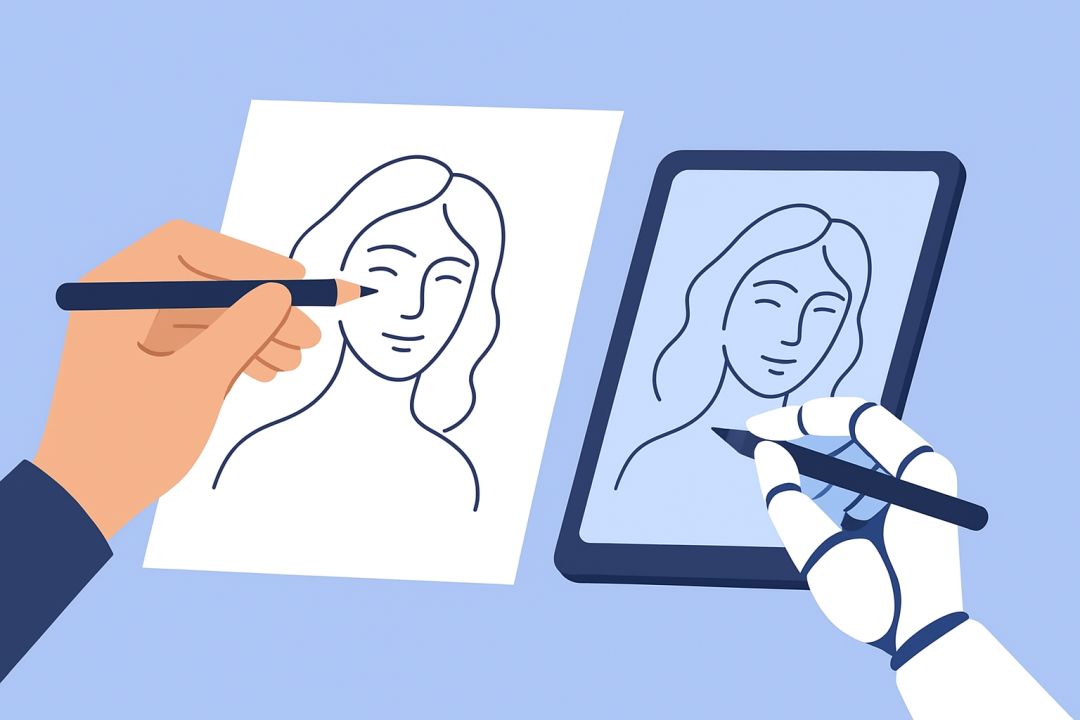Can a Machine Be Creative? Artists on Collaborating With AI

The notion of a machine creating art once belonged to the realm of science fiction. Today, artificial intelligence isn't just generating novel images or composing music; it's actively collaborating with human artists, blurring the lines of authorship and challenging our very definitions of creativity. As AI tools become more sophisticated and accessible, a fascinating dialogue is emerging among creators: can a machine truly be creative, or is it merely an incredibly advanced tool reflecting human input?
The AI as Muse and Assistant
For many artists, AI has become an unexpected muse, a tireless assistant capable of exploring countless variations and offering new perspectives. Sarah, a digital painter, describes her initial skepticism. "I thought it would just be a gimmick," she admits, "but then I started feeding it my rough sketches, asking it to experiment with different styles or compositions." The results, she says, were often surprising. "It wouldn't always be perfect, but it would give me ideas I never would have thought of on my own. It's like having a brainstorming partner who never gets tired."
This collaborative dynamic extends beyond visual arts. David, a composer, uses AI to generate melodic snippets and harmonic progressions. "It's fantastic for breaking through writer's block," he explains. "Sometimes I'll have a theme, but I'm stuck on how to develop it. The AI can spit out a hundred different variations in minutes, and even if I only use one or two, it jumpstarts my own creative process." He emphasizes that the final piece is undeniably his own, but the AI acts as a powerful catalyst. "It doesn't replace my creativity; it augments it."
The development of sophisticated algorithms capable of understanding and generating complex artistic forms has opened up new avenues for exploration. While some view AI as a threat to human artistry, many artists are embracing it as a revolutionary tool, much like the camera or the synthesizer were in their time. The debate, then, shifts from whether AI can create to how humans can create with AI.
Navigating the Ethics and Authorship
With the rise of AI-generated art comes a complex ethical landscape, particularly concerning authorship and intellectual property. When an AI produces an image based on vast datasets of existing human-made art, who owns the "originality"? This question is far from settled and is currently being debated in legal and artistic circles.
Mark, a photographer, raises a crucial point. "If I use an AI to generate a landscape based on a prompt, and that AI was trained on millions of photos, including mine, is it derivative? Is it truly new?" He believes transparency is key. "Artists should be upfront about their use of AI. It's not about hiding it; it's about acknowledging the tools and the complex lineage of the work."
Another area of concern is the potential for misuse. While many applications are focused on artistic enhancement, the ability of AI to generate increasingly realistic content, including what might be considered NSFW texting, also presents challenges. This underscores the need for responsible development and ethical guidelines within the AI community, ensuring these powerful tools are used constructively and respectfully. The conversation around ethical AI in art is ongoing, pushing artists, developers, and policymakers to consider the societal implications of these new technologies.
The Future of Human-AI Collaboration
As AI continues to evolve, the partnership between humans and machines in the creative sphere is only expected to deepen. Artists envision a future where AI acts not just as a tool, but as a more intuitive and nuanced collaborator. "Imagine an AI that truly understands your artistic intent, your personal style, and can anticipate your needs," muses Elena, a sculptor who uses AI for rendering and design iterations. "It could be like having a second brain dedicated solely to your creative vision."
The fear that AI will somehow diminish human creativity often stems from a misunderstanding of the collaboration. Most artists working with AI don't see it as a replacement for human ingenuity, but rather as an expansion of it. The unique human capacity for emotion, introspection, and storytelling remains paramount. AI can generate forms, but it is the human artist who imbues those forms with meaning and soul.
Ultimately, the question of whether a machine can be creative may be less important than the question of what new forms of creativity emerge when humans and machines work together. The artists on the front lines of this collaboration are not just creating art; they are helping to define the very future of what it means to be a creator in an increasingly intelligent world. The canvas of possibility has expanded, and with it, the potential for art unlike anything we've seen before.